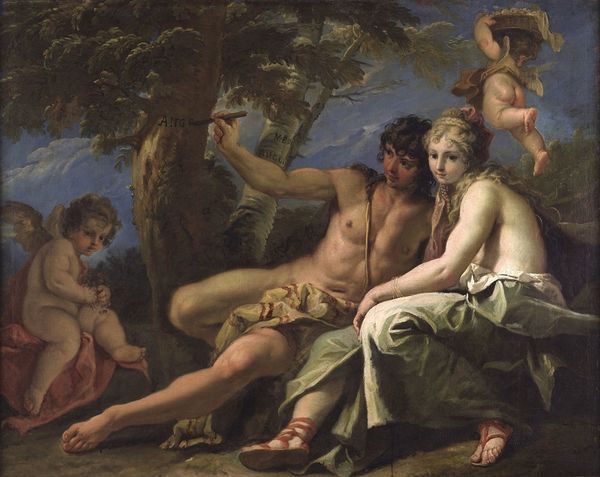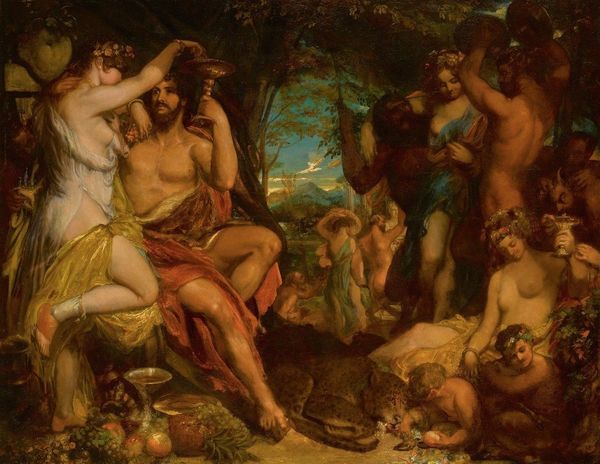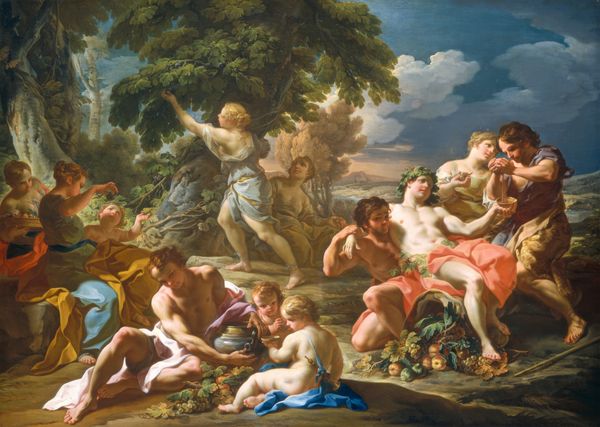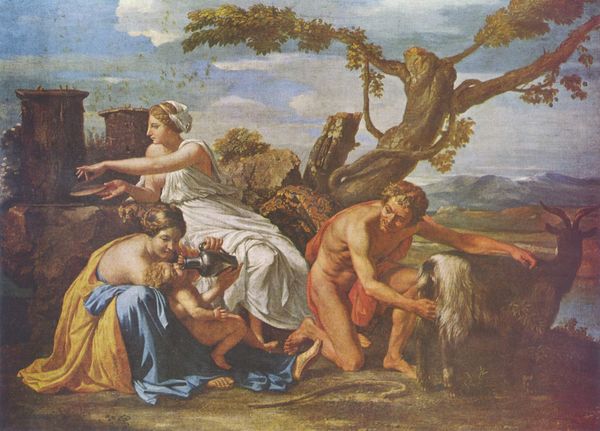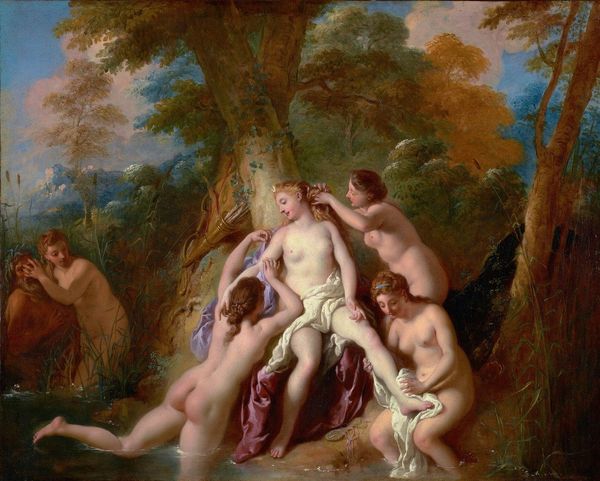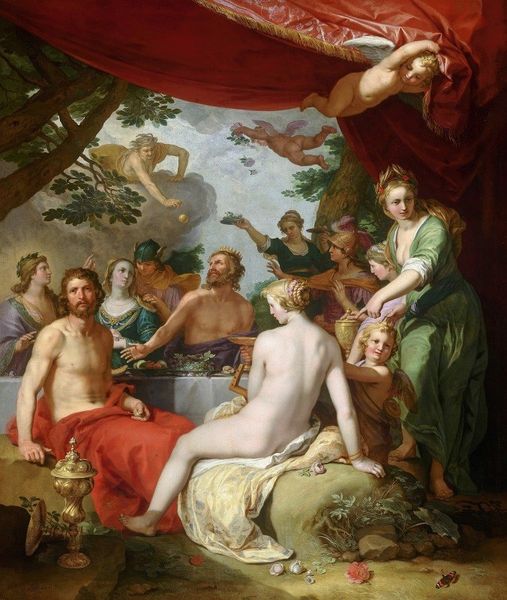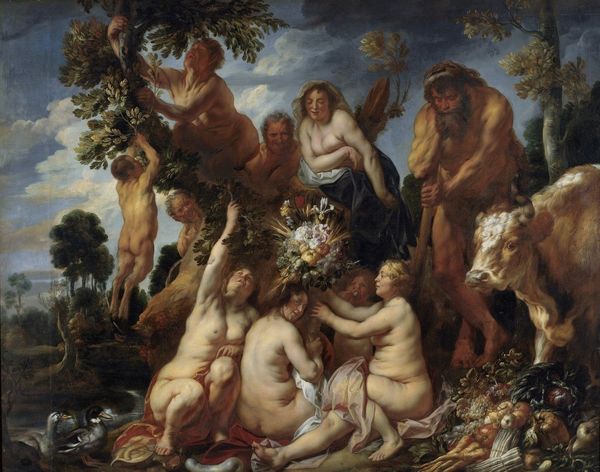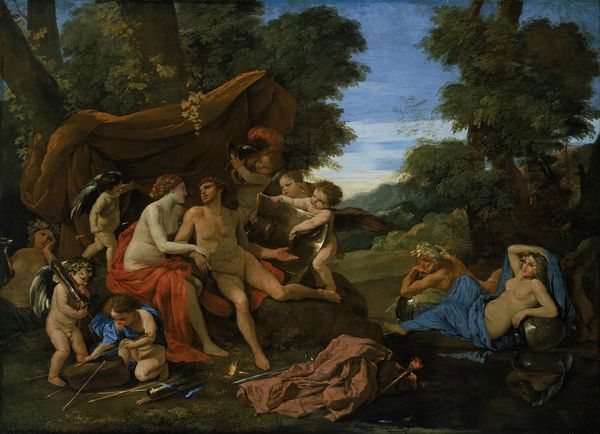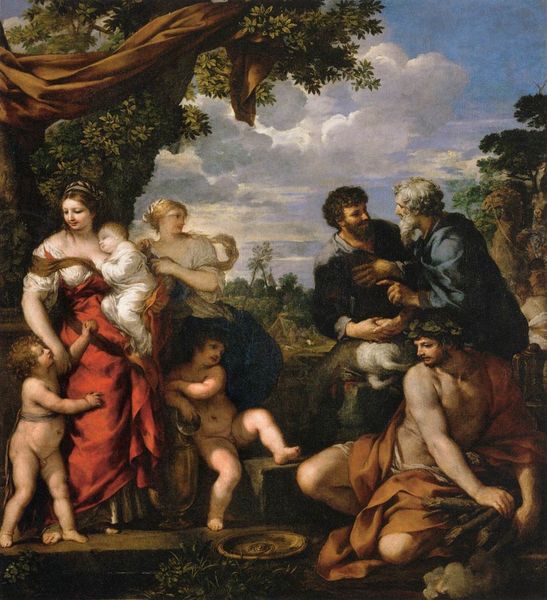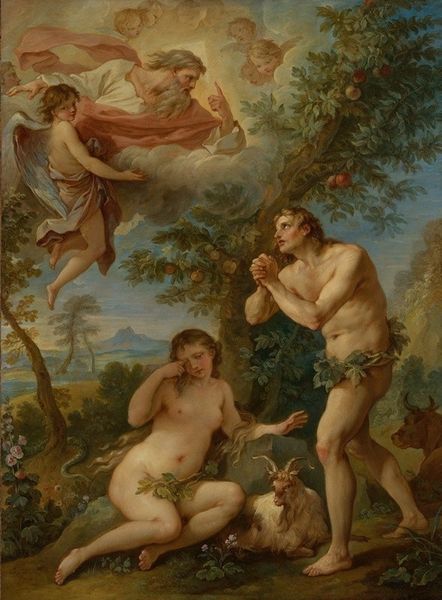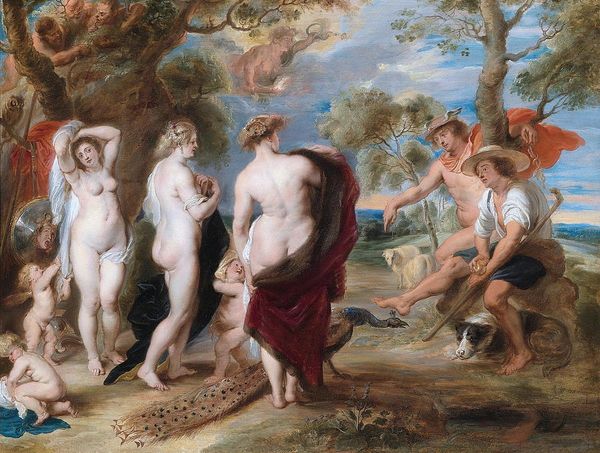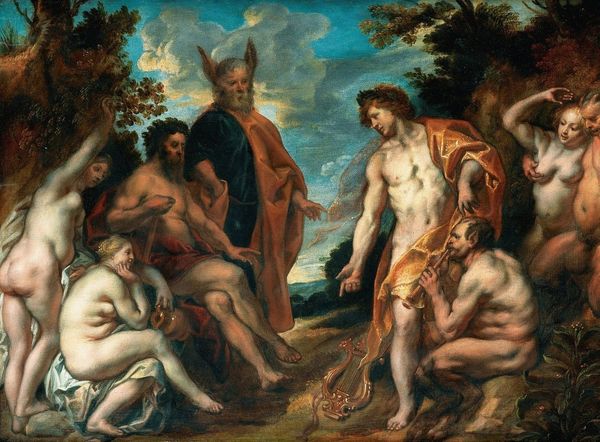
painting, oil-paint
#
portrait
#
allegories
#
allegory
#
painting
#
oil-paint
#
mannerism
#
figuration
#
11_renaissance
#
oil painting
#
group-portraits
#
mythology
#
human
#
history-painting
#
italian-renaissance
#
nude
#
portrait art
Dimensions: 148 x 88 cm
Copyright: Public domain
Curator: Correggio’s "Allegory of the Vices," created around 1530 and now residing in the Louvre, strikes me as a scene of rather cruel frivolity. Editor: Frivolity, yes, but cruel? Maybe it’s just the angle, but I see nymphs and a cherubic figure playfully tormenting a satyr. It’s mischievous, really—like a chaotic garden party gone sideways. Curator: Consider the composition. The figures are densely packed, their porcelain skin reflecting an idealized beauty, yet their actions involve restraining and teasing Silenus, who symbolizes intemperance. Note also how Correggio employs sfumato to soften the forms, yet the thematic content presents a stark moral lesson about the consequences of vice. Editor: Moral lesson, perhaps. But look at the light! It caresses their forms, bathing everything in a warm glow. It’s pure visual pleasure. It seems like Correggio himself wasn't fully committed to condemning these “vices," if he made them look so darn appealing. You can practically hear the music from that pipe mingling with their laughter. Curator: The very material itself contradicts your interpretation. This oil on canvas work showcases a masterful display of contrapposto within Mannerist conventions. Note the dynamism inherent within each carefully posed figure: This is the work of intellect, not simply pleasure. Editor: Okay, intellectual display it certainly is—no argument there. But those rosy cheeks on the toddler eating grapes—what do you call that other than delight? The overall effect transcends mere allegory. It is something joyful. Maybe the vice, then, is taking oneself too seriously? Curator: A perspective that disregards semiotic structures, I might add. However, that could be food for another analysis. Editor: Well, that gives us both something to consider. This "Allegory of the Vices" feels vibrant, messy, and unapologetically human, leaving me thoroughly charmed.
Comments
No comments
Be the first to comment and join the conversation on the ultimate creative platform.
